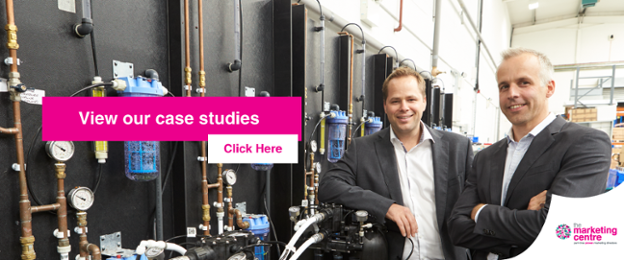Innovation, innovation, innovation.
It’s an easy word to throw around, and after a while starts to lose all meaning. This company, product or person is innovative, and innovation is key.
‘Innovation’ is one of those fat words associated with major tech firms and disruptive startups. But innovation is essential for all businesses, it’s not always about shaking up an entire marketplace. Often it can mean innovating processes or developing new products to future-proof an already successful organisation. The same is true of creating new services.
Customer-oriented product development – that is to say proper innovation which offers things people genuinely want – can significantly change the fortunes and value of a business, providing it’s introduced for a valid reason and developed well.
- You may like: Barriers to growth, and how marketing can help: Pricing
Meanwhile, a lack of new products is often the sign of a business resting on its laurels and not planning for the future. If growth has hit a plateau, development may be the way to start climbing again.
Here’s how to identify when lack of product development is a problem in a business, and why and how the process works.
How do you discover if product development is a barrier to growth?
There are two signs that product development has become a barrier to growth.
The first scenario occurs when a business has been too innovative. They might have a huge product line with hundreds of discrete offerings, but none of those products is developed to its full potential. Crucially, none of them deliver significant profit, either.
The second occurs when a business ignores product development entirely – neglecting its customers or failing to recognise when the marketplace around it is disrupted. In either case, companies continue to try to sell the same product when customers have moved on. In this scenario, growth is likely to slow or reverse.
It’s a fine balance. Consider Lego, which recently reported its first drop in profits and revenue for thirteen years. Euromonitor’s Matthew Hudak told the BBC that “[Lego has] grown so quickly with only one product that it inevitably had slowed down and hit a wall”, while Lego chair Jorgen Knudstorp said that diversifying into products that were not toys – such as films – had added complexity to the company and ultimately sapped growth.
Effective innovation and product development require a delicate approach that builds on core offerings without rushing to diversify.
What happens when businesses do nothing?
Over-eager innovators with more products than profits will continue to leak profit on poor products. They will waste spend on production, delivery and marketing, which could have instead gone into growing profitable products – thereby missing growth opportunities, too. Their customers may struggle to make choices at all: too many offerings create an atmosphere of uncertainty and regret in buyers, tanking conversions and prospects for future sales.
On the other hand, the future for businesses with no new products may be worse than their figures suggest. For slow-moving businesses, there exists a saturation point at which every customer who wants a product already has it. In this situation, businesses may tick along selling spares and replacements and new models to an existing market, but this isn’t growth. The company in question is left vulnerable to market disruption.
Jeweller and craft wholesaler Megan Auman put it bluntly: there’s no point in making and selling a product that’s losing you money. It’s also worth cutting old products that aren’t reflective of your brand, or that have become tired from years on the shelves.
How to break through the barrier
We’ve previously discussed the Ansoff Matrix – a way of dividing product development strategies according to known and unknown factors, which helps understand the risks involved in adopting different approaches. According to Ansoff, product development is a medium-risk strategy, with a goal to sell something new to an existing customer base, drawing on existing brand equity. The product is the unknown quantity – and the closer it is to the existing offer, the less risk involved.
Deciding how far to innovate – whether to develop a brand new product or work closer to existing lines – is a matter of mindset. Innovation for innovation’s sake (or forcing obsolescence to sell more units) is not the way forward.
A new product may be ideologically motivated – for instance, pitched to a millennial market focused on improving their local economy and quality of life. It might be focused on simplicity and quality, working better and lasting longer than a previous version.
In either – or any – case, good product development is customer-oriented. Instead of arguing in-house about what a new product should be like, find and talk to customers. Ask them what they want and develop something that does it.
How it feels when you do
Successful product development has palpable results. Once development is finished and a product is on the market, businesses quickly know whether or not they’ve been successful. New sales to existing customers, and winning new leads lifts every business from the doldrums.
Founded in 2004 as Exabre, The Filter originally provided recommendation services software for retailers and companies with large catalogues of online content including Nokia and Warner Brothers. Meanwhile, customer feedback indicated a potential market for sophisticated online retail personalisation software. In response, the team pivoted their platform to provide personalisation, too, winning Liberty of London and a major electronics retailer on the launch of their new service in 2014.
That’s a definite win for smart product development. How could your business follow suit?





